Nestled in the embrace of Tanzania lies the illustrious Mount Kilimanjaro, a beacon of challenge and exploration for many. Among its numerous paths to the summit, the Machame Route stands out for its striking landscapes and demanding trails.
As trekkers venture through this route, they are met with a tapestry of experiences that test their endurance and reward their perseverance. But what secrets does this route hold, and what tales do the winds whisper to those who dare to ascend its heights?
Good To Know
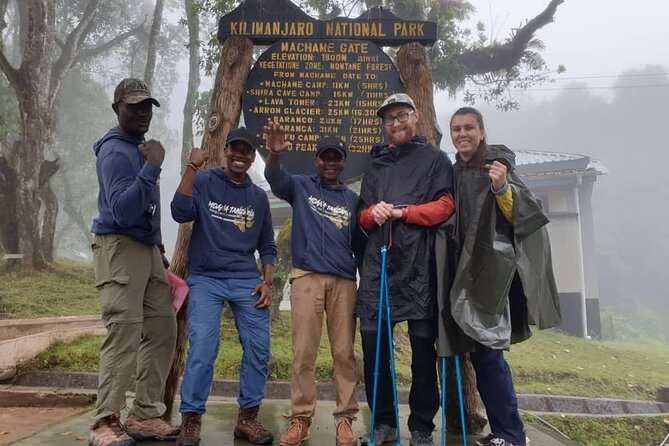
- Stunning scenery and challenging terrain characterize the Machame Route on Mount Kilimanjaro.
- Optimal trekking seasons are January to March and June to October for stable weather conditions.
- Strong physical fitness, altitude training, and acclimatization are crucial for success.
- Packing essentials like proper clothing, gear, hydration strategies, and energy-boosting snacks are necessary for the trek.
Route Overview
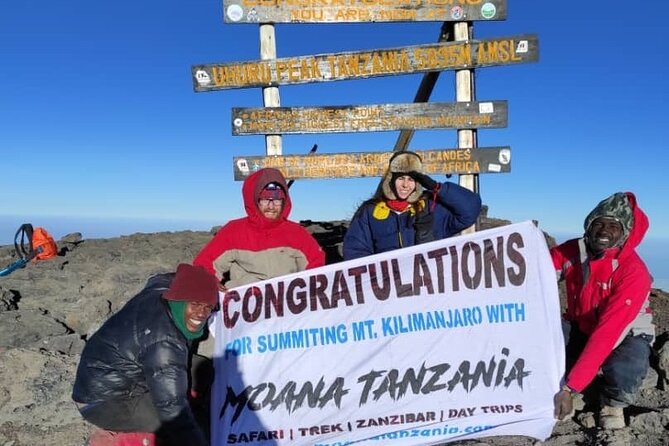
The Machame Route, known for its picturesque scenery and challenging terrain, is a popular choice among hikers seeking an exhilarating adventure up Mount Kilimanjaro. This route offers a variety of highlights, including passing through diverse ecological zones such as rainforest, moorland, and alpine desert. Hikers are treated to stunning views of the surrounding landscapes as they ascend towards the summit.
However, one of the significant challenges of the Machame Route is the rapid gain in altitude. Trekkers must acclimatize carefully to avoid altitude-related illnesses like altitude sickness. The route demands a good level of physical fitness and mental determination due to the steep inclines and high elevations encountered along the way.
Find more activities and experiences we've covered in Moshi.
Best Time to Trek
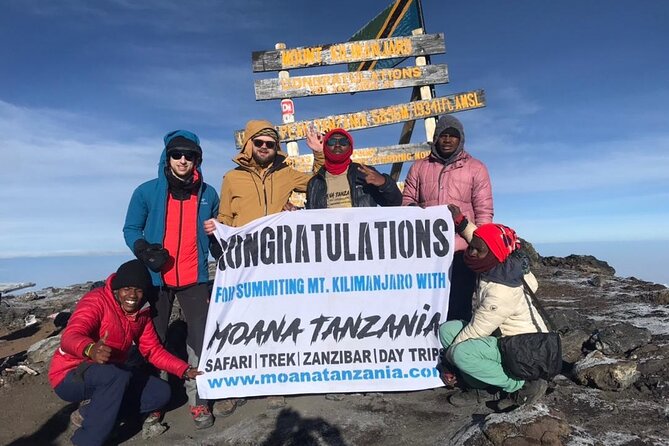
For optimal trekking conditions on the Machame Route up Mount Kilimanjaro, consider the seasonal variations in weather patterns. The best time to trek Mount Kilimanjaro via the Machame Route is during the peak seasons, which typically fall in the months of January to March and June to October. These periods offer more stable weather conditions with clearer skies, making for a more enjoyable and safer trekking experience.
During these months, the chances of encountering rain and snow are lower, enhancing visibility and reducing the risk of slippery trails. However, it’s important to note that weather conditions on the mountain can be unpredictable, so it’s always advisable to be prepared for sudden changes regardless of the time of year you choose to trek.
Difficulty Level
Optimal trekking conditions on the Machame Route up Mount Kilimanjaro are influenced by the difficulty level of the terrain, requiring trekkers to possess a strong physical fitness level for a successful ascent. The route presents various challenges, including steep inclines, rocky paths, and high altitudes.
Altitude training before the trek can significantly help in acclimatizing to the thin air encountered at higher elevations. Adequate fitness preparation, such as cardiovascular and strength training, is essential for coping with the demanding nature of the climb.
It’s recommended to engage in regular exercise routines that focus on building endurance and muscle strength. By being physically prepared, trekkers increase their chances of reaching the summit and enjoying a rewarding experience on Mount Kilimanjaro.
Acclimatization Tips
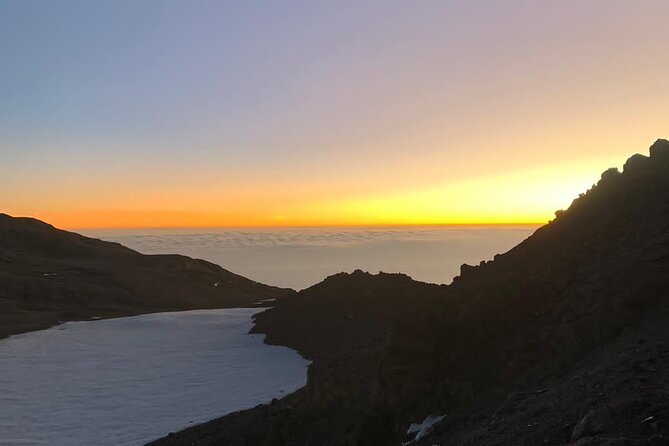
Acclimatization tips play a crucial role in preparing trekkers for the challenges of ascending Mount Kilimanjaro via the Machame Route. Altitude sickness is a significant concern when climbing to such heights. To combat this, gradual ascent is key. It’s recommended to spend at least one extra day at the higher camps for acclimatization.
Plus, proper hydration strategies are essential. Trekkers should drink plenty of water throughout the climb to prevent dehydration, a common trigger for altitude sickness. Avoiding alcohol and caffeine can also help in staying hydrated.
Being mindful of these acclimatization tips can greatly improve the chances of a successful and enjoyable trek up Mount Kilimanjaro via the Machame Route.
Packing Essentials
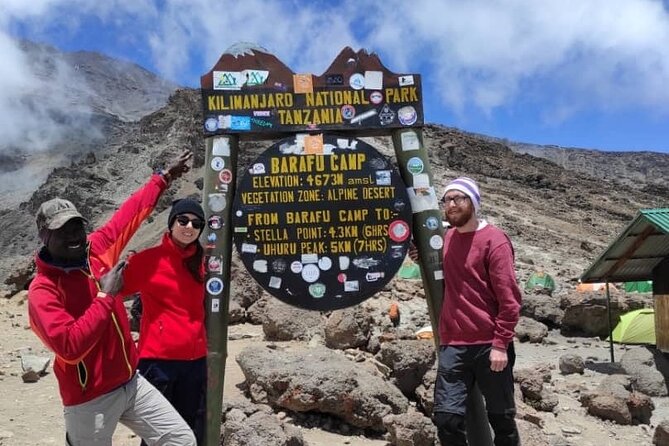
Packing smartly for the Mount Kilimanjaro trek via the Machame Route is crucial for a comfortable and successful journey to the summit. Here are some essential items to consider:
Clothing options: Pack moisture-wicking base layers, insulating mid-layers, waterproof outer shell, warm hat, gloves, and sturdy hiking boots.
Gear recommendations: Bring a quality sleeping bag, headlamp, trekking poles, sunglasses, sunscreen, and a backpack with a rain cover.
Hydration strategies: Carry a reusable water bottle or hydration bladder to stay hydrated throughout the trek. Consider bringing water purification tablets for refilling along the way.
Food choices: Pack energy-boosting snacks like trail mix, energy bars, and dried fruits to keep your energy levels up during the hike.
Wildlife Encounters
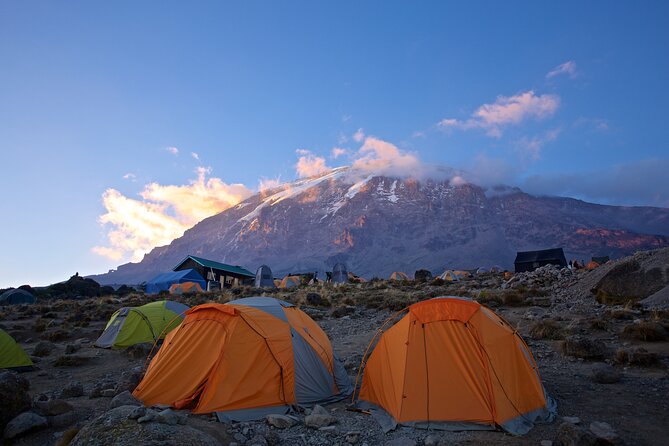
Encountering diverse wildlife along the Machame Route of Mount Kilimanjaro adds an exciting element to the trekking experience. Safari sightings of majestic elephants, playful monkeys swinging through the trees, and colorful bird species are common along the trail. Trekkers may also have the chance for up-close animal interactions with curious bushbucks or elusive leopards.
The lush rainforest section of the route provides a habitat for various creatures, offering a unique opportunity to witness the natural beauty of Kilimanjaro’s ecosystem. As hikers ascend higher, they might catch glimpses of mountain antelopes or even spot a rare sighting of a buffalo or a giraffe against the backdrop of the towering mountain.
Wildlife encounters truly enrich the adventure of conquering Mount Kilimanjaro via the Machame Route.
Summit Day Experience
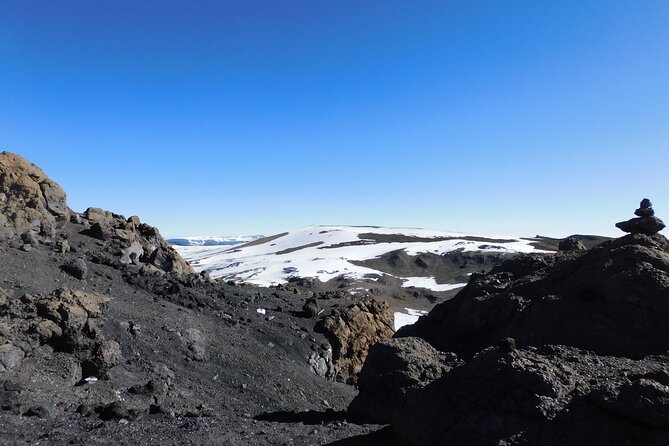
On Summit Day, climbers eagerly anticipate reaching the pinnacle of Mount Kilimanjaro, where breathtaking views and a sense of accomplishment await. The journey to the summit is filled with altitude challenges, testing the climbers’ endurance and determination.
However, amidst the struggle, a strong sense of group camaraderie develops as climbers support and motivate each other towards the common goal of reaching Uhuru Peak.
As the climbers finally conquer the summit, they’re rewarded with awe-inspiring mountain views stretching as far as the eye can see. Summit celebrations ensue, with hugs, high-fives, and shared emotional moments marking this incredible achievement.
The culmination of the climb isn’t just about personal victory but also about the bonds formed and the memories created during the challenging ascent.
Post-Trek Reflections
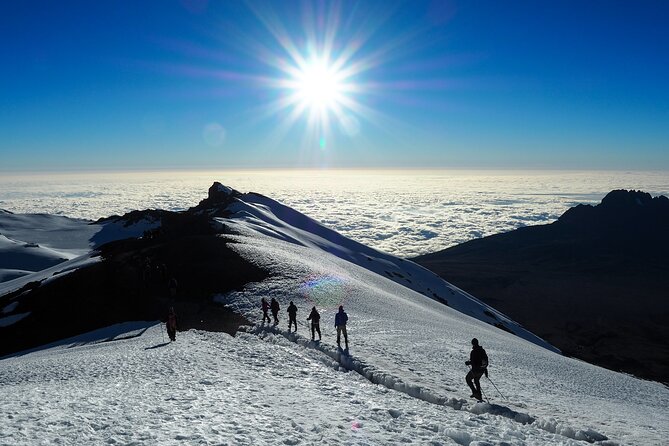
As climbers descend from the summit of Mount Kilimanjaro, reflecting on their journey and achievements becomes a natural part of the post-trek experience. Mental preparation plays a crucial role in the success of the climb, with climbers often discovering newfound strength and resilience within themselves. The emotional connections forged with fellow trekkers, guides, and porters create lasting memories that enrich the entire experience. Plus, the culture and local interactions along the Machame Route provide a deeper understanding of the region’s traditions and way of life. Sharing stories around the campfire, learning local songs, and tasting traditional cuisine all contribute to a sense of connection with the land and its people.
| Reflections | Impact | Memories |
|---|---|---|
| Mental Preparation | Inner Strength | Resilience |
| Emotional Connections | Camaraderie | Lasting Bonds |
| Cultural Immersion | Understanding | Appreciation |
Frequently Asked Questions
What Is the Availability of Wi-Fi or Internet Connectivity During the Trek on the Machame Route up Mount Kilimanjaro?
During the trek, the availability of Wi-Fi or internet connectivity may be limited. Signal strength varies, affecting connectivity. It’s advisable to have offline navigation and communication tools. Enjoy the natural surroundings without relying on constant digital connection.
Are There Any Cultural Interactions or Visits to Local Communities Included in the Itinerary While Trekking on the Machame Route?
Cultural interactions and visits to local communities offer authentic experiences on the trek. Travelers can enjoy traditional customs, gaining insight into the rich heritage of the region while trekking.
How Are Emergency Situations Handled During the Trek, and What Is the Protocol for Evacuations if Needed?
In emergency situations during the trek, the team swiftly responds with well-established emergency protocols. Evacuation procedures are in place, ensuring safety. Their commitment to handling emergencies efficiently provides trekkers with peace of mind.
Are There Any Additional Activities or Side Excursions That Can Be Arranged Before or After the Trek on Mount Kilimanjaro?
Pre-trek activities like exploring local markets or cultural tours can enhance the journey. Post-trek excursions to national parks for wildlife encounters or adrenaline-pumping adventures add a thrilling finale. Immerse in the diverse offerings surrounding Mount Kilimanjaro.
What Measures Are in Place to Ensure the Sustainability and Environmental Conservation of Mount Kilimanjaro During the Trekking Experience?
To ensure sustainability and environmental conservation during the trekking experience, the team implements various practices. They focus on Leave No Trace principles, limiting waste generation, promoting responsible tourism, and educating trekkers on preserving Mount Kilimanjaro’s fragile ecosystem.
The Sum Up
Embark on an unforgettable adventure through the Machame Route on Mount Kilimanjaro, where breathtaking views and challenging terrain await.
With expert guides, essential amenities, and carefully curated services, trekkers can enjoy the beauty of Africa’s highest peak.
From wildlife encounters to the exhilarating summit day experience, every moment on this journey is bound to leave a lasting impression.
Prepare for the trek of a lifetime and create memories that will last a lifetime.
More Tour Reviews in Moshi
Looking for something different? Other Moshi activities we've written about
- 19 Best Spa And Hot Springs Experiences In Moshi
- 25 Best Tours In Moshi
- 3 Best Workshops And Classes In Moshi
- 20 Best 3 Day Tours In Moshi
- 3 Best Full-Day Tours In Moshi
- 20 Best 4 Day Tours In Moshi
- 10 Best Private Driver Services In Moshi
- 25 Best Safari Tours In Moshi
- 10 Best Airport Transfers In Moshi
- 20 Best 2 Day Tours In Moshi
- 8 Best Guided Tours In Moshi
- 4 Best Historical Tours In Moshi
